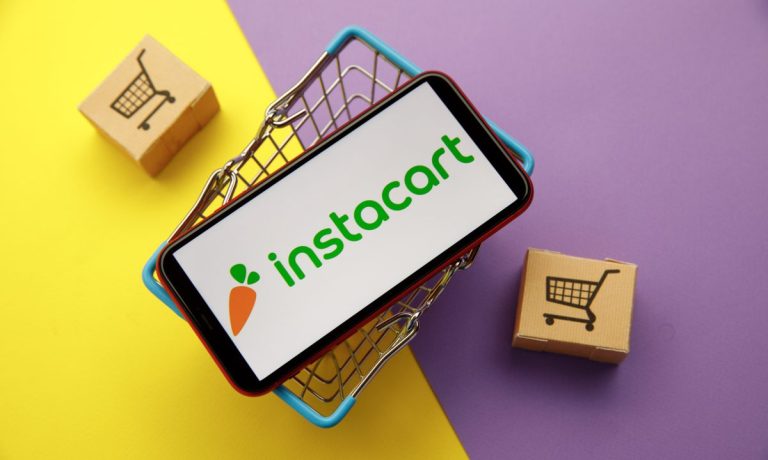It has been a big week for leading grocery aggregator Instacart. The company announced Wednesday (March 23) its new “Instacart Platform” suite of solutions, which includes offerings such as 15-minute grocery delivery and new marketing solutions, and then Friday (March 25), it was reported that the company is cutting its internal valuation by 38% from $39 billion to $24 billion in response to changing market conditions.
Read more: Instacart Leverages Range of Fulfillment Options to Be Consumers’ One-Stop eGrocery Shop
Changing Market Prompts Instacart to Cut Valuation From $39B to $24B
While sailing may not be smooth for the aggregator right now, some of the initiatives announced Wednesday, if pulled off successfully, could significantly expand the company’s reach going forward and boost revenue. For instance, the company shared that it is directing part of its focus to boosting its in-store technology offerings with “digital integrations and connected hardware,” including “scanless carts.”
“We started as the eCommerce and fulfillment partner of choice for grocers, and we’ve been building on that foundation to broaden and deepen our capabilities, in order to help retailers innovate faster than ever on their own properties,” said Instacart CEO Fidji Simo in a statement.
Certainly, self-checkout is an area of rapid growth right now. Many of those that can are trying out frictionless, computer-vision-powered checkout in the style of Amazon’s “Just Walk Out,” and last month, Amazon opened its first Whole Foods Market location equipped with the technology.
Advertisement: Scroll to Continue
See more: Amazon’s ‘Just Walk Out’ Whole Foods Store Opens as Frictionless Checkout Takes Hold
For grocers that do not have the means to equip their entire store with computer vision technology (and, depending on the system, with shelf censors), smart carts can offer a helpful alternative, enabling self-checkout without requiring consumers to stop in a kiosk area and potentially wait in a long line.
In October, the company announced the acquisition of Caper AI, a company that has created a cart that uses computer vision artificial intelligence (AI) to recognize objects when they are placed in the cart, allowing consumers to be charged for their purchase without having to take the extra step of scanning a barcode.
Read more: Instacart Acquires Smart Cart Creator Caper AI to Power Omnichannel Tech for Grocery Store Customers
Additionally, as Instacart touts the data analytics tools it offers to grocers, smart carts can provide additional insights into consumer behavior, providing visibility into how shoppers move through stores and interact with products.
“This is what the next generation of the in-store journey should look like,” Raz Golan, CEO and co-founder of grocery store technology company Shopic, told PYMNTS in an interview in August. “All these data points are ones that we just couldn’t measure very well until today, and it opens a whole new world of data analytics.”
See more: Smart Carts Bring Data Analytics Into Grocery Aisles
According to data from PYMNTS’ study “Today’s Self-Service Shopping Journey: The New Retail Expectation,” created in collaboration with Toshiba, one in three shoppers had used self-checkout for their most recent grocery purchase. The study, which surveyed more than 2,000 U.S. adults about their checkout behaviors in May, also found that 68% of those taking advantage of the option reported that they did so because it is faster than traditional checkout, and 51% indicated that they chose the option because they did not want to wait in line.
Read more: Consumers Want Self-Service Checkout Options but Rarely Get to Use Them




